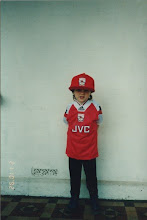
Objectified is a film that brings to the screen the real values and emotions put into not only the final product, but the journey and evolution of a design and how it creates a relationship with the user.
We are all affected by design. We live in a consumer world and everywhere we look, feel, touch, listen, it is due to a product speaking to us. Everything has had thought and as Objectified describes, “
every product speaks to the person who put it there”. Through the designer’s product, they are speaking to the consumer, issuing them with advice on, basically, how to live, through the use of their design. This is a brilliant point, as it again demonstrates how our world is full of products, helping and aiding us in life, giving us a sense of being.
Through Objectified, I have gained a thorough understanding of needs and wants that a designer is to fulfill. We are required to give a physicality to the consumer’s lifestyle, their thoughts, their values and philosophies. A product must have reason behind it.
The lineup of international designers in the film is astounding, all giving an acute opening into how they personally think and believe design should be. As a designer, it is these philosophies that I would like to develop into my own. Just by watching Objectified, I have learnt of how language must be imposed within a design to create a strong sense of meaning that will allow the product to communicate and create understanding with a consumer.
“
Why is it like that? Why is it like that and not like this?”
This quote/question by
Jonathan Ive from Apple is a direct indication of just how broad product design can be. It is a statement about how important it is to discuss and inscribe an emotional energy into a product. This quote also causes me to analyse the whole scope of a product as a designer, forcing myself to pick the most true factors that are going to provide the best testament to the product at hand and it’s nature.
“
I think designers understand what people need, perhaps even better than they do”
Erwan Bouroullec The role of a designer is to innovate and appropriate in a way that develops a connection with a user. This quote gives meaning to the research and involvement a designer ensues with a product, understanding what is required in order to fulfill particular needs and wants of the consumer. Getting deep within the psychology of a particular target market allows the designer to fully comprehend a consumer audience, deliberating between science, function, philosophy and aesthetics.
“
Why do we feel like we need to keep revisiting the archetype over and over again?”
Karim RashidKarim Rashid is trying to dispossess designers here of unoriginal thinking and to go deeper into a product and what it represents, not what its predecessors embody. This kind of thought is vital in order to comprehend and display emotion in a product that could otherwise go unwarranted if taken for granted within the bounds of a previous design.






.jpg)

























